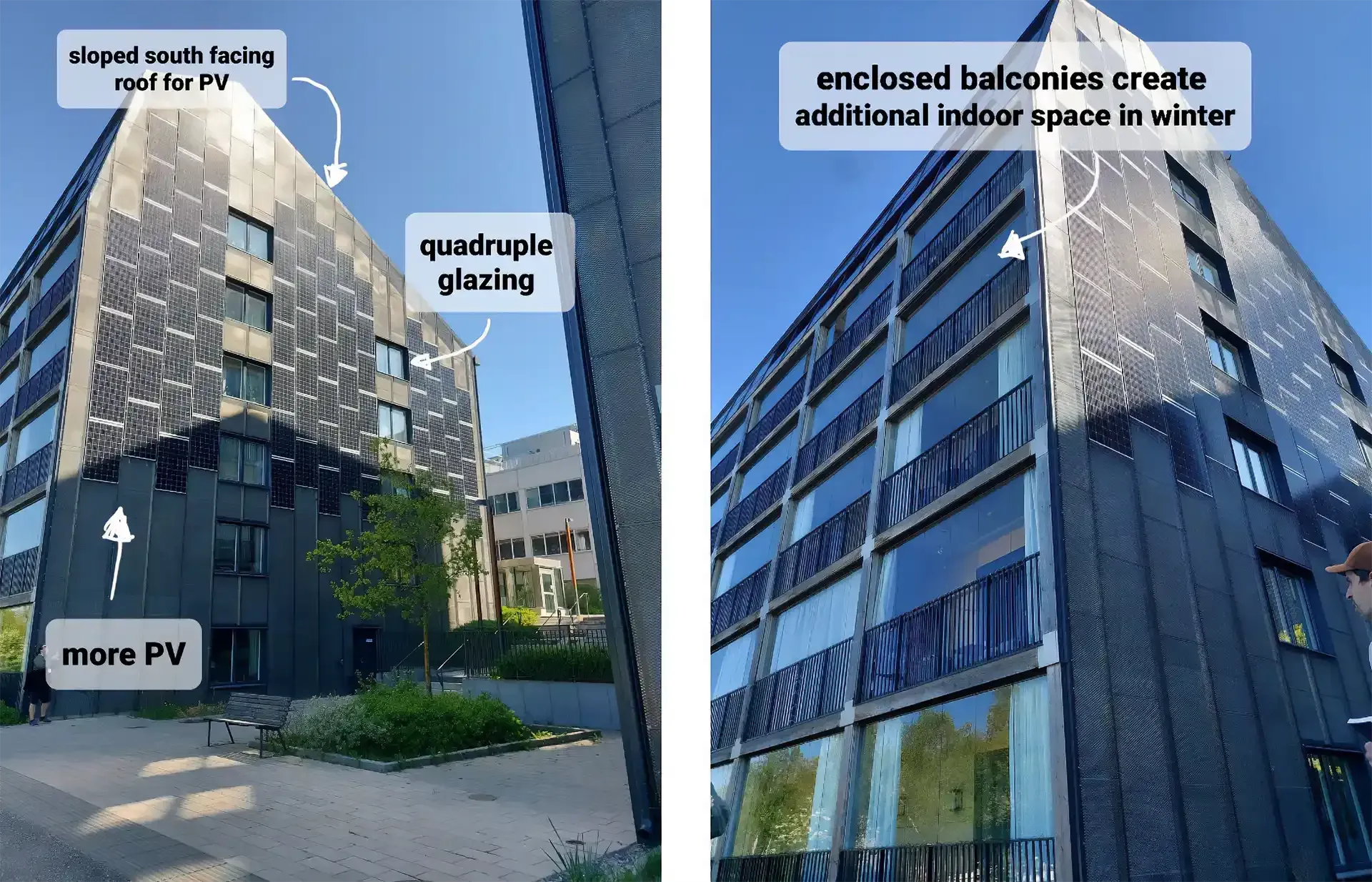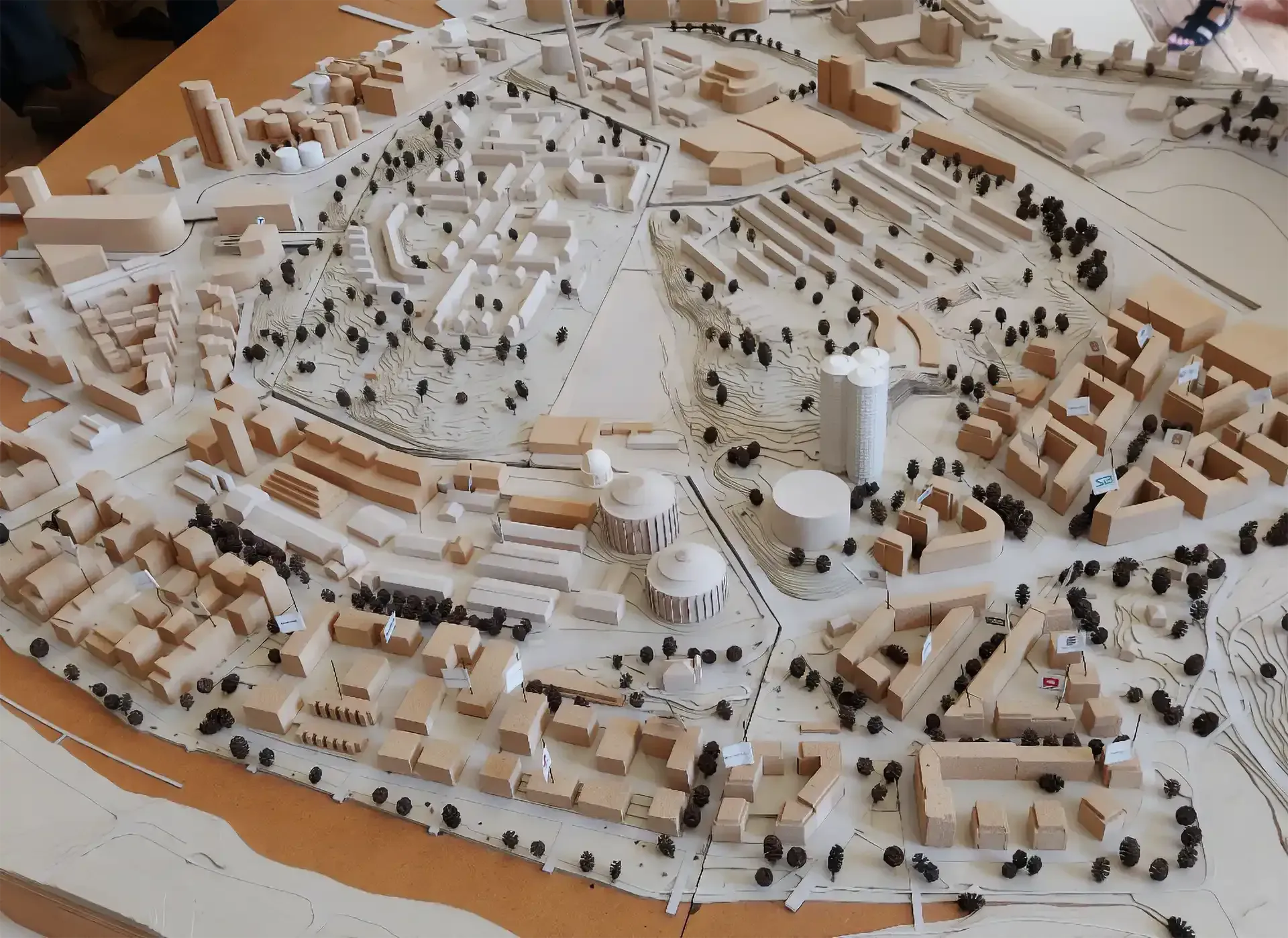Fresh from her study trip to Stockholm, Policy and Practice Manager from CIH Scotland, Ashley Campbell, relays her experience of the Swedish capital’s innovative approach to housing and sustainability.
As someone who has been calling for more investment in social housing my whole career, advocating for good quality affordable housing as the key to reducing poverty, improving wellbeing and giving people the best possible platform to succeed in life, I didn’t think my favourite thing about Stockholm would be that they don’t have any social housing at all.
Hear me out.
It wasn’t the lack of social housing per se but the gentle reminder that there are other ways of doing things, and we shouldn’t always cling doggedly to the familiar.
That’s not to say any one place has everything figured out or we can take an idea that works well somewhere else and transpose it onto our own complex matrix of people, culture and policy. But we should take the time to look up from our busy desks every now and again, which is exactly what I did when I was lucky enough to be invited on a study trip to Sweden to find out about Stockholm’s approach to sustainability.
The focus of the trip was to learn about net zero, but I left with so much more.
DAY ONE: LOOKING AROUND
Slightly travel weary, I and 40 or so housing practitioners-turned-students made our way to Stockholm’s old town in the late afternoon. We were met by a charming tour guide who spoke convincingly about the buildings and geography of a city that grew and thrived around a strategic shipping route sometime after the Vikings had passed their prime (despite what the souvenir shops stacked with Viking memorabilia might have you believe).
Perhaps more enthusiastically, he relayed the stories and gossip that underpin tourism in ancient cities like Stockholm. Does Ikea really name its rugs and doormats after places in Denmark so that people all over the world will tread dirt on Sweden’s old rival? Was mathematics really excluded from the Nobel Prize because of an affair that Alfred Nobel’s wife had with a talented mathematician who most certainly would have taken the top prize?
I won’t ruin the fun by factchecking what was an excellent opening gambit, perfectly setting the scene for a properly educational trip.
DAY TWO: LOOKING BACK
On the second day, the learning started in earnest. An 08:30 coach from the hotel delivered us to the City Museum where academics and experts outlined the history of Stockholm’s housing system before we visited a housing development on the outskirts of the city.
Green heat
An impressive 80% of buildings in Stockholm run off district heating systems, while the other 20% use heat pumps. With just two per cent of UK homes connected to district heating and less than one per cent using heat pumps, this seems like a long way off for us. So, how did they do it?
Unfortunately, there doesn’t appear to be any magic at work here. Stockholm started developing the district heating infrastructure in the 1950s, so they have a significant headstart on the UK. Another speaker later in the trip emphasised this point, stating that net zero isn’t easy, and it doesn’t just happen: It requires active decisions and support from all citizens.
"I asked about fuel poverty, but it wasn’t really a term that was recognised."
I asked about fuel poverty, but it wasn’t really a term that was recognised. Homes connected to the network are provided with heat at around 21ºC as standard, with costs covered through rent or some kind of service charge (a little lost in translation, I think). Although, there was recognition that poorly insulated homes may struggle to maintain the heat, making it more of a comfort (and potentially health) issue than a financial issue.
Housing is not an investment
There is a very different attitude towards housing in Stockholm, and it is not seen as a personal investment or means to make money.
Even Stockholm’s approach to social housing is different. It doesn’t even have any. When a member of our group asked what they have instead, the speaker gently taunted: “We don’t have social housing like you, we have nice houses.”
"We don’t have social housing like you, we have nice houses."
Something akin to social housing was developed in the 1930s as part of an experiment dropped 12 years later following feedback from the residents who felt stigmatised. Instead, people on low incomes receive subsidies to help with their housing costs, hence no fuel poverty and no obvious differentiation between residents.
Homes are either rented through companies with strict regulations controlling tenancies and rent, which is negotiated annually through strong tenant unions, or bought through a co-operative model, meaning owners have a lot of involvement in the management of the buildings. This approach seems to ensure that owners are invested in the places they are living in, not in how much profit they might make when they decide to sell up.
Designing the perfect dwelling (scientifically speaking)
A research body was established in the 1940s to study how people use space in their homes to ascertain how rooms could be optimally arranged and proportioned. This scientific approach to space and design still seemed to be present in the developments we visited, with a strong focus on reducing energy demand. For example, keeping rooms and windows small to minimise the amount of space needing to be heated and to stop that heat from escaping.
We heard from an architect later in the trip who told us single-person households are the most inefficient, needing to heat space and water all for one person when resources ideally would be shared. Again, a very scientific approach, but I did wonder how well the rigid boundaries of science can be applied to the messy realities of life.
"Stockholm’s housing model may seem idyllic, but it’s far from ideal."
Indeed, the housing system in Stockholm isn’t actually perfect. Stockholm’s housing model may seem idyllic, but it’s far from ideal. Long waiting lists mean it can take around 10 years to secure a tenancy, and high costs mean younger people are being priced out.
Next stop, Starkholmen
In the afternoon, we travelled to Starkholmen district to visit a housing development that was part of the ‘million homes programme’ delivered in the 1970s. The scheme was a highly ambitious government project that saw the inefficient and derelict buildings demolished and replaced with one million new homes over a 10-year period.
While the buildings reminded me of post-war urban Scotland, it seemed like the community had been planned in a very different way from Glasgow’s suburbs, which were created as part of the slum clearances in the 1960s. These developments have since been criticised for their lack of social infrastructure and potential contribution to ‘the Glasgow effect’, significantly shortening the life expectancy of many city residents to this day.
At the centre of the Starkholmen community, we visited a large open square with a fountain, shops, fresh fruit and veg stalls, cafes and people sitting out enjoying the sunshine. Our guide informed us there were three churches serving different religions, a sports centre, theatre and school all within a couple of minutes’ walk.
"Cars were practically absent."
Cars were practically absent, with underground carparks on the periphery of the development, and a metro station that can whisk residents and visitors into the city centre in under 15 minutes. Instead of roads, green spaces and parks weaved between buildings.
But our guide also spoke openly about issues with integration in this neighbourhood and other areas of the city; an influx of migrants without enough focus on support for new arrivals has led to clashes and gang violence.
DAY THREE: LOOKING AHEAD
If the previous day had been about the history of Stockholm, our final day was very much about the future.
It began with a trip to Hammarby Sjöstad, which was extensively regenerated as part of the city’s bid to host the Olympic Games in 2004. Stockholm didn’t win the bid, but Hammarby Sjöstad did get a new environmental programme focussing on waste management, water purification, heat and electricity.
However, it became clear that, beyond the infrastructure, more work needed to be done with local residents to reduce energy use and reach the district’s carbon-neutral goal.
ElectriCITY now supports communities to work with companies, local authorities and academics in a bottom-up approach to carbon neutrality. We heard about ‘energy managers’, volunteers in each building acting as champions for energy reduction, sharing ideas and involving building residents in decision-making.

A royal ending
Possibly saving the best for last, our guide from the city council was clearly proud of what was being created here – and rightly so.
He showed us around the new Royal Seaport development, which is set to transform formal industrial sites with a mixture of 12,000 new homes and 35,000 working spaces neighbouring a working port.
Beautifully preserved and intricate brickwork of the city’s old Victorian gasworks will form the centrepiece of the regeneration project as a hotel and music venue attracting visitors to mix with local residents. The homes, which are being built on the edge of a national park, reflect a range of innovative technologies, with solar panels on show and an underground vacuum waste disposal and recycling system.
"Testing blue-sky thinking and sustainable solutions is at the heart of the city’s approach to innovation."
We were met by a young architect outside an ‘energy plus’ building he had designed as part of a competition. He explained the building generates more energy than the residents use. It wasn’t clear that this type of building could be realistically (or affordably) replicated, but testing blue-sky thinking and sustainable solutions here is at the heart of the city’s approach to innovation.
Unlike my home city of Edinburgh, where new buildings are often required to be “in keeping” with the surrounding areas, and planning disputes in conservation areas can last for decades, in Stockholm, the buildings need to be different.
"One building can’t be separated out for being different when they all are."
Intentional disconnect between buildings reflects the jigsaw of styles that piece together to make up the old neighbourhoods. One building might be timber clad, the next a weathered corrugated metal. This makes it even more difficult to tell the rented homes from the owned. One building can’t be separated out for being different when they all are.
Carefully considered landscaping creates beautiful spaces for residents to relax and socialise, but it also provides natural flood drainage and ‘green bridges’ for wildlife supporting biodiversity. Developers in Sweden also need to contribute one per cent of the development cost to the municipality to invest in public artwork.

I would move here in a heartbeat… but could I afford to?
We did some rough calculations and currency conversion: An average two-bedroom apartment would cost around £600,000. Add on the service charges, and I think most people would be priced out of this paradise.
Nevertheless, it was inspiring to see what can be done with clear vision and strong leadership. This place was city led, not developer led.
HOW CAN WE BE MORE LIKE SWEDEN?
The short answer is, we can’t. We’re living in a different time and place. We have different buildings and infrastructure, different cultural norms and a different economic outlook than that of post-war Sweden. We shouldn’t try to be like Sweden, but we can certainly borrow a few ideas.
"We need our politicians to lead by example if they expect us to follow."
If we are to have any chance of meeting net zero in the UK, we need strong political leadership on the big decisions and a long-term financial commitment to create certainty for housing organisations, industry and individuals. Constantly dropping targets, cutting funding and slipping deadlines for regulations doesn’t help. We need our politicians to lead by example if they expect us to follow.
Everyone must be on board if net zero is to work in people’s homes. We need to foster a sense of social sustainability as well as climate sustainability; we need people to be involved in decarbonising their homes and their lives outside of them.
People need to feel the benefits of carbon reduction, whether that’s in reduced bills, warmer, more comfortable homes or greener places to enjoy outdoors.
We all need to be able to see the value in net zero.
Many thanks to the National Housing Maintenance Forum (NHMF) for organising the study tour, and to the city officials, academics, guides and residents who shared their knowledge so freely and invited us into their communities.
Share This Article
Other articles you may like








